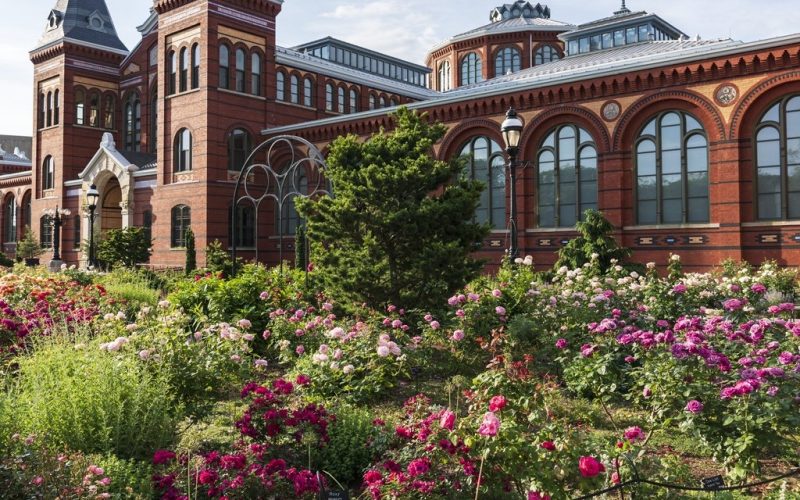
Smithsonian Gardens
PO Box 37012 MRC 506
Washington, District of Columbia 20013-7012
What unique situations and initiatives have you undertaken or do you plan to undertake to address climate change?
- Centrally controlled smart irrigation system allows us to reduce water usage by monitoring solar, wind, humidity, temperature, moisture conditions and adjusting the watering cycle as needed.
- Capturing and reusing rainwater at our Greenhouse facility to reduce the use of potable water.
- Where possible we have switched to porous walk surfaces which can assist in reducing runoff into local water systems.
- Conversion of gardens to a more inclusive wildlife habitat and to support pollinators.
- Featuring habitat in our exhibits and interpretation throughout all gardens as a campus wide exhibition.
- Conversion of gardens to include native plants.
- Removal of turf grass areas converting these areas into planted beds, reducing potential pesticide and fertilization applications.
- Reducing of frequency of mowing and increasing mowing heights.
- Use of biological controls and environmentally compatible Integrated Pest Management/Plant Health strategies when managing pest situations and reduction of unnecessary pesticide sprays.
- Participation is recycling of materials where applicable.
- Use of compost produced by related inter-institutional units.
- Our own designated sustainability team that reviews potential sustainable practices that can be adopted within our unit.
- Investment in a Soils Master Plan that brings in specialists to look at ways we can improve soil quality and health for future projects.
- Trials of sustainable products or practices including: Earthkind Rose Trials, PittMoss peat moss alternative trials, and organic herbicides trials.
What are the most pressing problems or opportunities in your community that can be leveraged to address climate change?
- Expanding public understanding of the importance of plants and the many plant connections in people’s lives.
- Being an effective advocate for and a meaningful part of conserving threatened and endangered plants.
- Increasing tree canopy in the urban environment.
- Sea level rise, change in weather events, flash flooding events that effect museums and gardens.
- Change in horticultural growing zones. Global warming and adjusting plant palette to accommodate long term warmer temperatures.
What unique features of your garden can be leveraged to address climate change?
- Audience of 25 million visitors. Opportunity to educate them on urban greening, habitat, water management, pollinators, etc.
- Strong partnerships across the Smithsonian Institution allow for many interdisciplinary connections with gardens as a focal point.
What unique restraining forces do your institution or community face that prevent you from addressing climate change effectively? How can you steer this meeting of forces away from compromise and toward reconciliation and harmony?
- Logistics and resources that need to be stretched to cover many initiatives.





